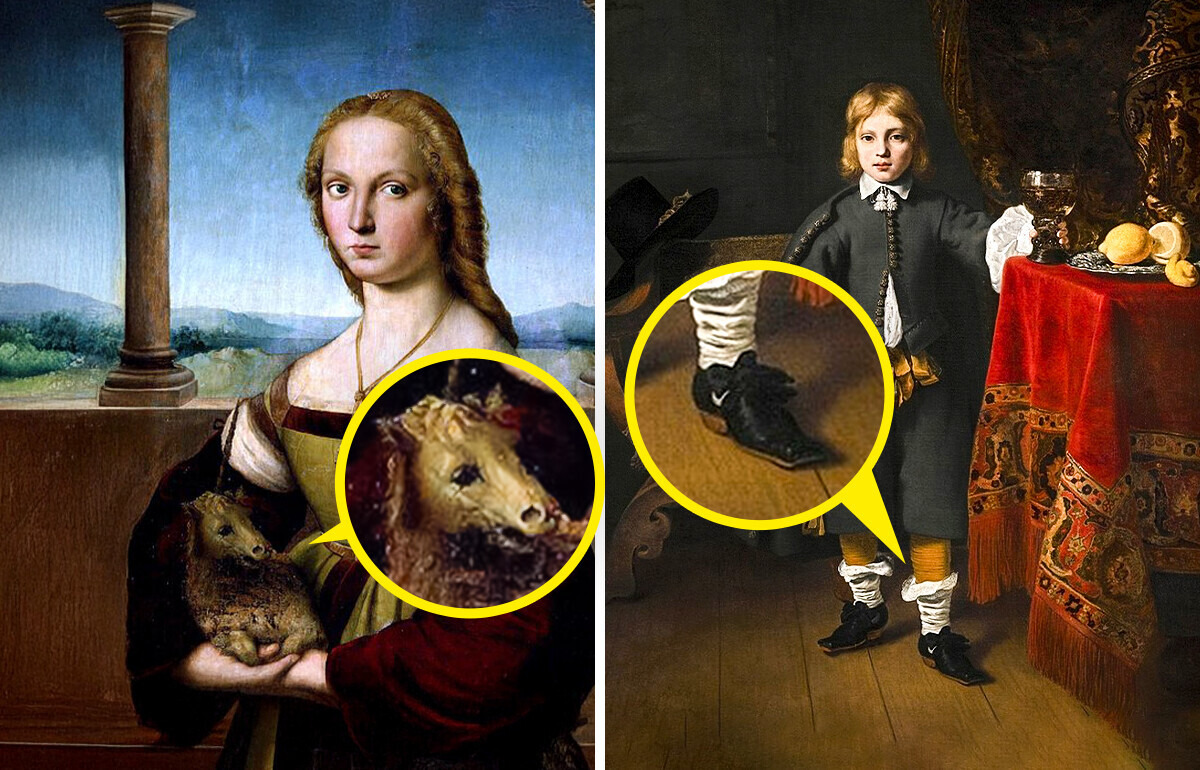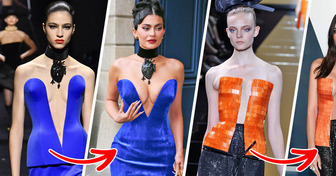The Radical Reshaping of Beauty Standards


Art is more than paint on canvas or lines on paper. Behind many masterpieces lie mysteries, hidden meanings, and surprising details waiting to be discovered. In this article, we reveal the fascinating secrets behind these famous paintings that will make you look at them in an entirely new light.
At first glance, this painting seems straightforward: a young woman walks down a sunlit path, while a man kneels in the shade, holding a flower. But when it went viral in 2017, viewers joked that the woman appeared to be glued to her phone, ignoring a suitor—sparking theories about time travel.
In reality, the gallery revealed that she’s holding a hymn book, lost in spiritual contemplation. The contrast between the humorous modern interpretation and the actual meaning gives this work an unexpectedly thought-provoking edge.
Some believe Van Gogh’s famous night café scene may subtly echo The Last Supper. The central white-clad figure behind the bar and the surrounding figures invite comparisons to Christ and the Apostles. While not universally accepted by art historians, the theory adds a fascinating layer of possible symbolism to this iconic piece.
One of the most analyzed paintings in history still holds secrets. High-resolution scans revealed hidden symbols in Mona Lisa’s eyes—barely visible to the naked eye. In her right eye, the letters “LV” possibly stand for Leonardo’s initials. On her left, a cryptic combination of numbers and letters continues to baffle researchers.
Klimt reportedly painted Adele’s portrait over 100 times—obsessed with perfecting the positioning of her hands. Adele, self-conscious about a slightly deformed finger, tried to hide it in every pose. Klimt finally captured the gesture he sought, resulting in one of the most celebrated portraits of the 20th century.
Originally attributed to Jacques-Louis David, this painting was later revealed to be the work of his student, Marie-Denise Villiers. Once the true author was known, critics who had previously praised it began to see “flaws.” The model, Charlotte du Val d’Ognes, had dreamed of being an artist but gave it up for marriage—a story captured poignantly by another woman artist.
This quiet interior scene conceals a hidden story. X-rays revealed that Vermeer originally painted a man and a dog in the background—both later replaced by a mirror and chair. The revision shifts the painting’s emotional tone from romantic to introspective, suggesting a deeper contemplation of solitude.
Hidden beneath the surface of this portrait lies another face. Using X-ray imaging, Australian researchers discovered a second woman underneath—believed to be Emma Daubigny, a model Degas admired. This layering hints at the emotional complexity of Degas’ process and relationships.
This enigmatic portrait has its own story of transformation. X-rays show that the unicorn was originally a dog, symbolizing fidelity—suggesting the painting may have been a wedding gift. Some experts believe that when the marriage was called off, the dog was painted over with a unicorn to reclaim the subject’s innocence.
Painted in the 17th century by Dutch artist Ferdinand Bol, Portrait of a Boy captures an eight-year-old standing confidently with a goblet in one hand and the other resting on his hip. At first glance, the painting seems like a classic representation of the period—but a closer look reveals a curious modern twist.
Visitors have pointed out that the boy’s left shoe bears a white mark strikingly similar to the Nike “swoosh” logo. Of course, this is impossible—Nike wasn’t founded until 1964, over 300 years after the painting was created. This detail first caught the attention of Fiona Foskett and her daughter Holly during a gallery visit. “Hold on,” she joked to her daughter, “is he wearing Nike trainers?” Whether it’s a coincidental brushstroke or a quirk of the paint, the resemblance has fueled playful speculation that the boy might just be a stylish time traveler.
Van Gogh, often strapped for resources, frequently reused his canvases. Patch of Grass depicts a peaceful, close-up view of a grassy field, painted with delicate attention to each blade and bloom in a light, vibrant palette.
But beneath this serene surface lies a hidden secret. Using X-ray imaging, researchers discovered an earlier painting concealed underneath—a somber portrait of a woman wearing a bonnet. The contrast between the dark, introspective tone of the original and the lively colors of the top layer offers a striking glimpse into Van Gogh’s evolving state of mind and his resourceful artistic process.
Carel Fabritius’s The Goldfinch, painted in the 17th century, disappeared for over 200 years before resurfacing in Brussels. This small yet hauntingly realistic image of a tethered bird is painted on an unusually thick wooden panel—suggesting it may have once been part of a larger architectural element, like a door or window, designed to trick the eye.
Restorers later discovered tiny dents on the painting’s surface, likely made while the paint was still wet—otherwise, the surface would have cracked. One theory is that these marks were caused by the catastrophic gunpowder explosion in Delft that claimed the artist’s life. If true, the painting not only survived the blast but carries physical evidence of the tragic event woven into its very surface.
This 350-year-old painting by Dutch master Pieter de Hooch stirred up a modern mystery after Apple CEO Tim Cook visited a museum in Amsterdam in 2016. During a press event, he shared a peculiar observation: in the artwork, a man appears to hand a woman a rectangular object that looks suspiciously like an iPhone.
Painted in 1670, the scene shows a woman seated with a dog in her lap, receiving what is presumably a letter. But Cook’s playful suggestion—that it might be an iPhone—sparked a wave of online debate about time travel and hidden messages in classical art. “I always thought I knew when the iPhone was invented,” he said, showing the image, “but now I’m not so sure anymore.”
We’ve uncovered the secrets in the brushstrokes—but what if we could go one step further and meet the people behind the paint? Stick around, because next time we’ll use AI to show how these famous faces might look in real life.











